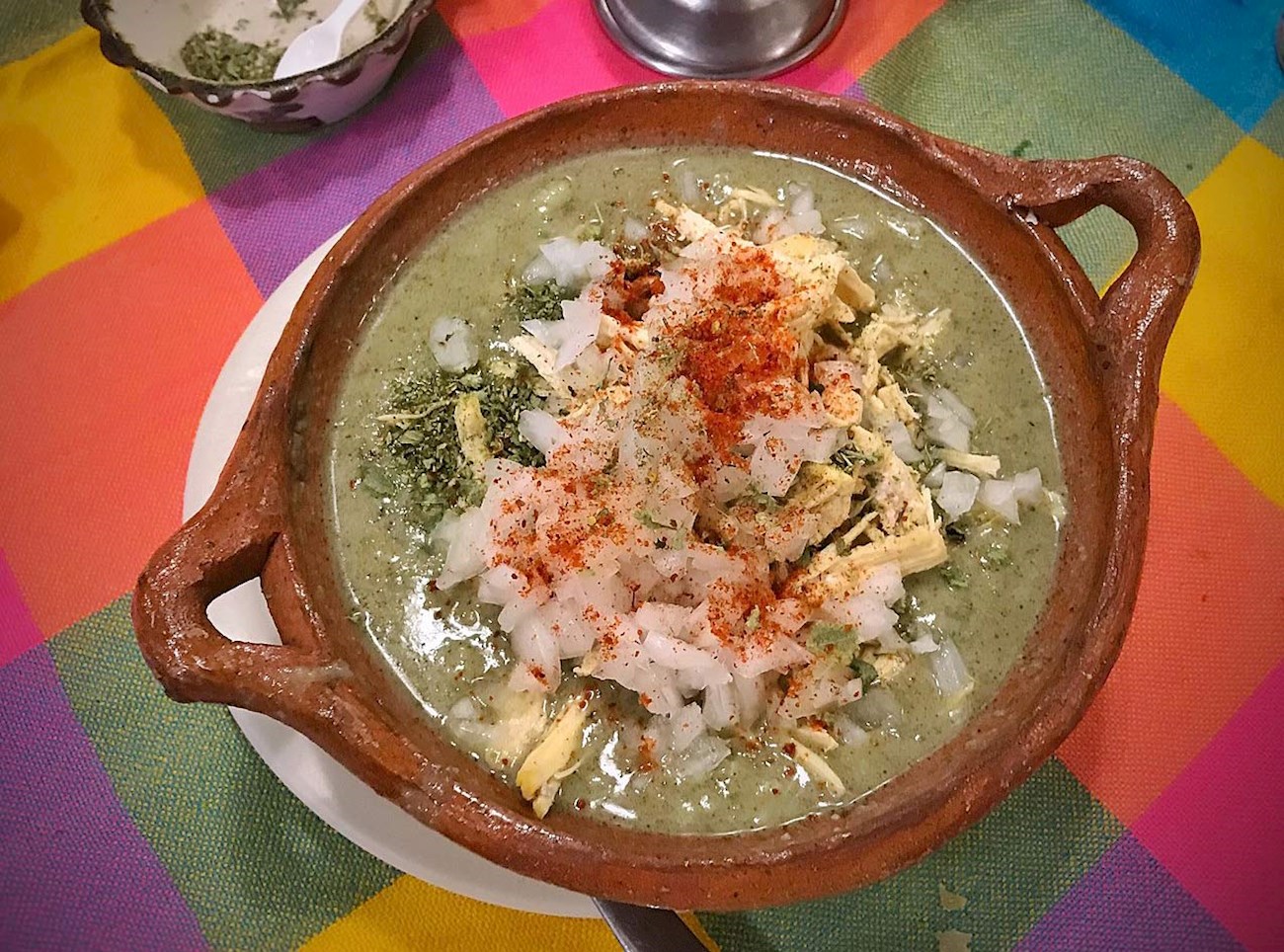Pozole is a soupy and aromatic one-bowl stew from Mexico, usually served to crowds on special occasions and celebrations such as Christmas, weddings, or birthdays. Its main ingredient is nixtamal or hominy - large, dried corn kernels that are pre-cooked in an alkaline solution in order to soften them.
The process, known as nixtamalization, makes the solution foamy or potzolli in Nahuatl, which is how pozole got its name. Other ingredients in the dish include a variety of herbs, spices, and meat such as pork, chicken, or seafood, depending on the region.
VARIATIONS OF Pozole
Pozole is a soupy and aromatic Mexican stew that comes in three versions – red, white, and green, symbolizing the colors of the Mexican flag. Although there are many variations, pozole verde or green pozole is usually made with a combination of hominy, chicken or pork (or both), onions, garlic, salt, and a green sauce consisting of poblano and jalapeño peppers, green tomatoes, lettuce, radish or spinach leaves, oregano, cumin, pumpkin seeds, salt, garlic, and onions.
The ingredients are covered with water, simmered until everything is fully cooked, and then mixed with the sauce and simmered for a few more minutes. The stew is served in individual bowls and it's usually garnished with shredded lettuce, diced onions, lemon wedges, and chicharrónes.
Tamal is a Mexican dish dating back to the Aztecs, consisting of corn masa dough with a filling that can be either savory or sweet, steamed and wrapped in corn husks, leaves, or banana leaves. The tamales are traditionally accompanied by atole, a masa drink.
Even though it is common for Mexican food to be served with a variety of sauces and salsas, tamales are the exception because they are usually eaten plain and simple without any sauces, although it is not a rule set in stone. One of the first records of tamales dates back to the 1550s when the Spaniards were served the dish by the Aztecs who made them with beans, meat, and chiles.











